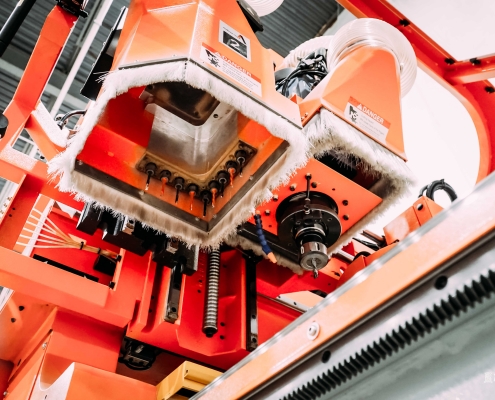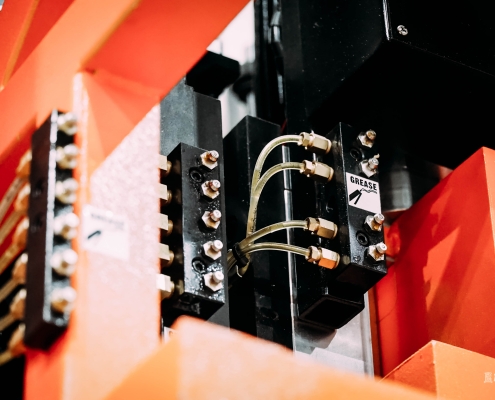CNC Series: How does cutting speed affect your cutter life?
Over the coming weeks, we will be looking at what our CNC Product Manager, Alex Colic, calls the “Trifecta of a CNC Router Production”: speed, weight, and vacuum holding. All three topics are directly related to tool life, productivity, and cut quality.
Typically, when you’re trying to make things last, you take it easy on them. The harder you push it, the faster it will decline. However, the opposite is true for CNC routers and tooling. Through our extensive data accumulated from our vast installation base, we have determined that producing an optimum chip load will extend the life of your cutter.
If you want to extend your cutter life, you need to produce an optimum chip load. Most CNC operations use a 3/8″ or 1/2″ compression spiral bit to cut out parts on a nested-based CNC router, and the spindle RPM is between 18,000 and 21,000 and cutting 20 to 50 meters per minute. Machine acceleration determines the actual speed achieved to establish proper chip load. By feeding slower, you will be overcutting, which creates heat, and heat breaks down the cutter edge, causing it to dull rapidly.
For example, on an Omnitech Selexx CNC router, we have done studies on a 3/8″ compression spiral bit and have achieved over 200 sheets before the bit needed replacing. Conversely, users report that they achieve only 60 sheets per cutter on a competitive machine. So, the Omnitech Selexx achieves more than 3.3 times the life of another machine brand (Machine X). For instance, if you are cutting 60 sheets per day, you will go through one router bit per day on a competitor’s machine. On a Selexx, you can get 200 plus sheets, so you are using 1 cutter every 3.33 days, and the cost savings can be substantial.
3/8” compression spiral bit = $115.00 each
Sheets machines per bit: Omnitech Selexx = 200 | Machine X = 60
251 working days per year (annual tooling cost)
Machine X = $28,865 | Omnitech Selexx = $8,659.50
Annual Savings: $20,205.50 (70% savings on tooling)
This is only the tooling cost difference. We haven’t even quantified the time it takes to change a tool and the ruined sheet that indicates a tool replacement is necessary. If you add this up, think of the costs in production time and material lost. Over 251 days, this will add up.
Average tool change time = 20 minutes
Omnitech Selexx = 1 tool change every 3.33 days = 1506 minutes (25 hours) per year changing tools
Machine X = 1 tool change per day = 5020 minutes (197 hours) per year changing tools
Annual Savings: 170 production hours saved
Many costs quantify the difference, such as hourly wage and employees’ overhead time, and the lost productivity and how that affects sales. Also, consider that a bit is often not replaced until it breaks or produces a poor cut quality. You then throw out the defective sheet, which costs money.
To achieve faster feed rates, you need to have axis servo drives large enough to move the machine’s mass at a rapid speed. As you can imagine, you need to accelerate quickly to achieve a programmed feed rate before changing directions. Lighter machines with less horsepower can be programmed to a certain cutting speed but will never have enough power to actually achieve the programmed speed. Anderson/Omnitech has the perfect balance of servo drive power and machine weight. On “Machine X,” it may state a certain feed speed capacity, but in most cases, you will never achieve that speed due to the size of the servo drive and the machine’s overall lighter build.
Stay tuned and read our next blog, which discusses CNC productivity’s next point: Weight, where bigger is better.
Akhurst Machinery. Building Trust. Creating together.
















